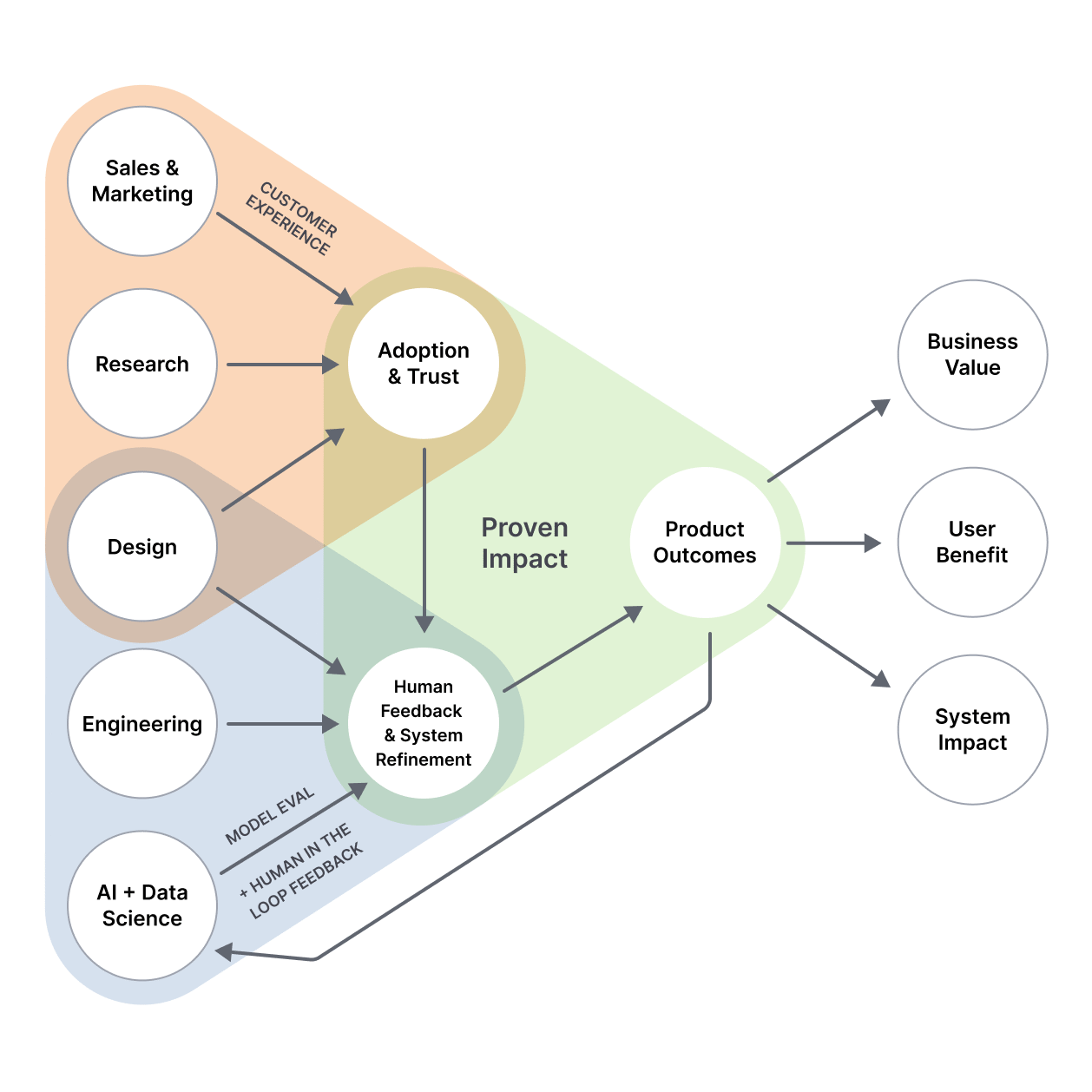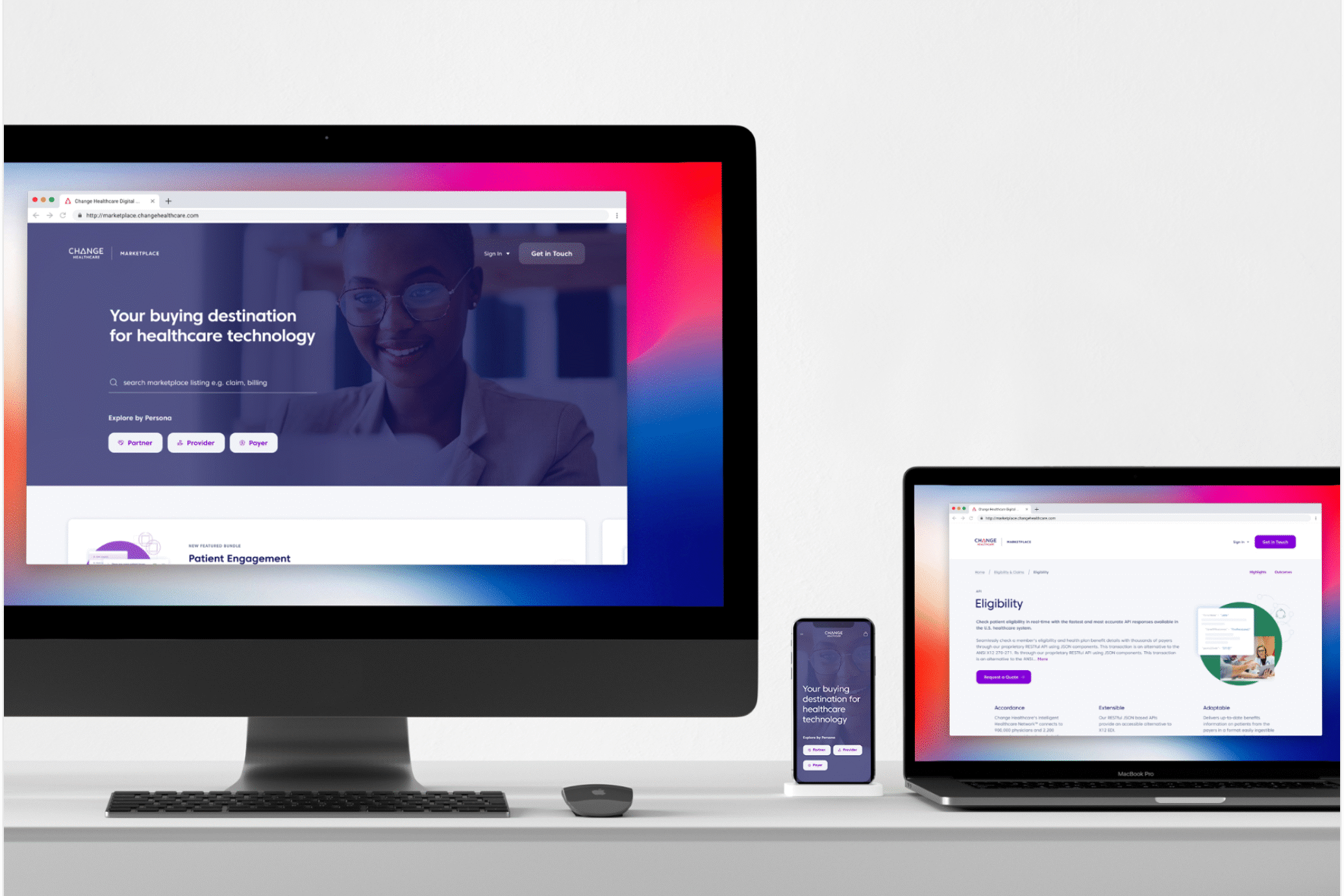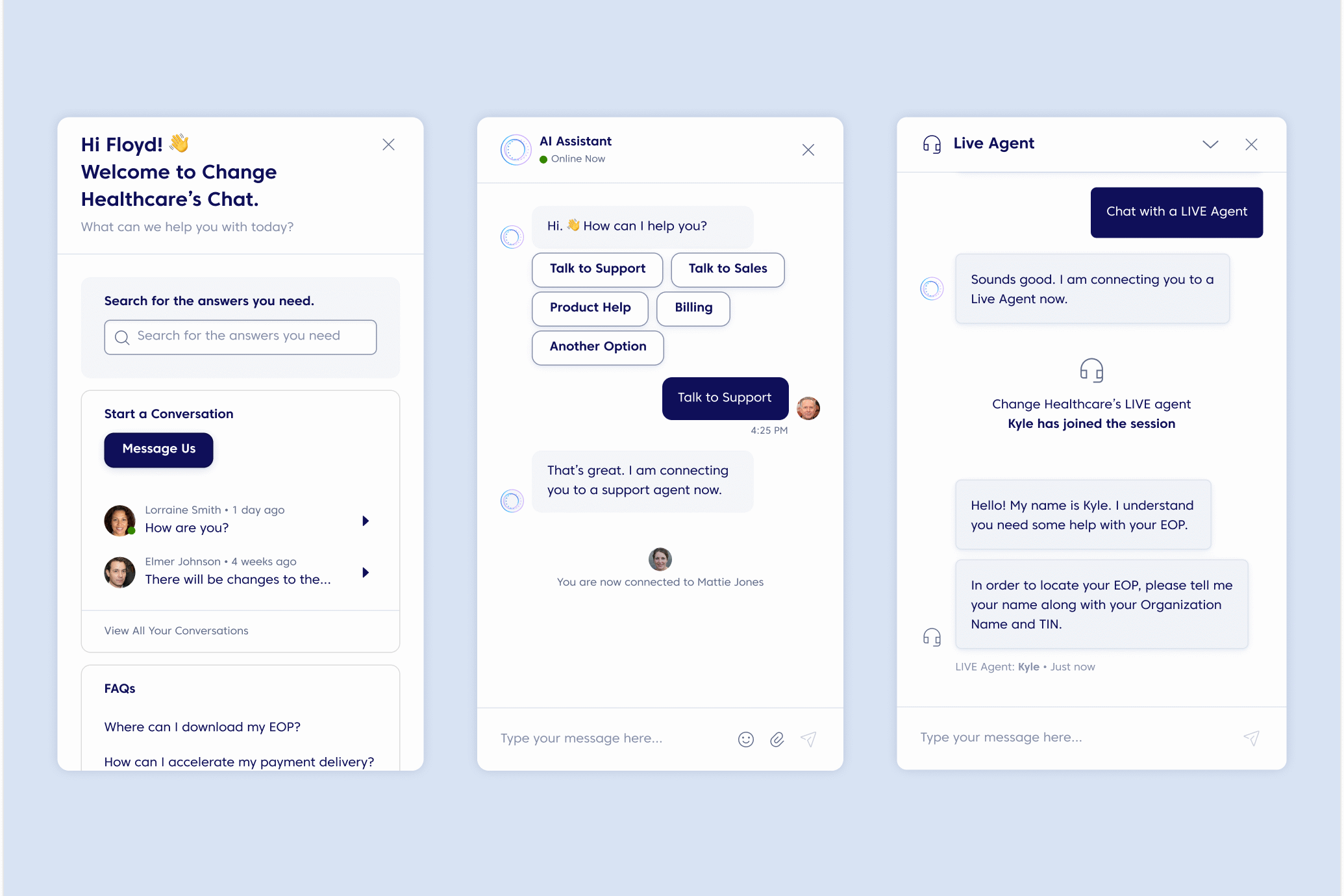CASE STUDIES
Designing for Impact & Growth
The case studies below showcase my hands-on leadership across design strategy, systems thinking, and execution — from concept to launch. Select case studies are shared in context based on the relevance of the opportunity.
Growth Referrals Journey
Redefined how users discover, share, and earn through referrals by designing a system grounded in motivation and timing — not marketing gimmicks. A data-led, human-centered redesign that turned a stagnant referral program into a self-sustaining growth engine.
Digital Marketplace Platform
Designed an enterprise-scale marketplace that brought clarity, speed, and trust to complex B2B transactions. Translated operational chaos into a unified buying experience that accelerated revenue and strengthened cross-functional alignment.
AI + Live Agent
Designed a hybrid conversational system that balanced automation with empathy, reshaping how healthcare providers access critical payment data. Proved that AI can amplify the human experience when designed with understanding, not just intelligence.
From Insight to Impact
In the AI era, product challenges begin with ambiguity, but that’s where transformation starts. My approach is rooted in uncovering the real problem through data, collaboration, and human insight, then rapidly shaping AI-driven solutions that earn trust and deliver scale.
As a design leader, I believe in the power of intentional design, anchoring innovation in research, testing, and real-world validation to enhance user engagement and experience. For me, the goal isn’t just to create something usable; it’s to make it valuable, scalable, and integral to the system it serves.

My philosophy
How I Design for AI-Driven Product Success
Whether it’s a startup product racing toward product–market fit or an enterprise platform built for scale, great products don’t succeed just because they function. They succeed when they’re shipped, adopted, trusted, and continuously improved.
This visual reflects how I approach building AI-driven systems responsibly: combining human insight, model behavior, engineering rigor, and feedback loops that keep improving performance long after launch.
For me, intelligent products should not only work, they should learn, adapt, and deliver measurable value for both people and the business.
How I Work
Design Strategy
Ground every decision in purpose and evidence.
• User-centered approach
• Data-informed insights
• Competitive analysis
• Cross-functional alignment
• Prioritization tied to outcomes
AI/ML Product Design
Design systems that learn, adapt, and perform.
• System design + data design
• Model evaluation and refinement
• Human-in-the-loop validation
• Responsible AI principles
• Scalable patterns for AI-driven workflows
Art of the Possible
Bring ideas to life fast and refine through proof.
• Rapid prototyping
• User testing
• Feedback loops that de-risk decisions
• Iterative design
• Continuous experimentation
Manish brings clarity and structure to ambitious, cross-functional work. His ability to frame ambiguity, connect design to business outcomes, and drive alignment across teams makes him an invaluable design leader.Kelly Griggs, Head of Design for Growth, Gusto (via LinkedIn)
Manish’s passion for elevating user experiences is contagious. His innovative thinking, cross-functional collaboration, and relentless drive for quality transformed how we design and deliver digital experiences.Katie Bradley, Staff VP of Tech User Experience at Elevance Health (via LinkedIn)
Manish brings teams together around what truly matters—creating meaningful, business-aligned user experiences. His leadership and perspective made design thinking an integral part of our product strategy.Smriti Anand, Sr. Product Manager, Change Healthcare (via LinkedIn)
Manish inspires cross-functional teams to see the bigger picture—crafting delightful end-to-end experiences grounded in research and strategy. He brings vision, clarity, and collaboration to every stage of the product lifecycle.Emilie Lostracco, Sr. Manager, UX Research, Change Healthcare (via LinkedIn)
Manish listens with empathy, finds common ground, and designs with purpose. His ability to connect business, marketing, and user needs makes him a transformative design leader.Nicole Bateman, Marketing Executive, Elevance Health (via LinkedIn)
Manish combines curiosity with discipline—blending data, design, and experimentation to uncover insights and drive measurable business outcomes.Amy Smessaert, Experimentation Lead, Change Healthcare (via LinkedIn)



